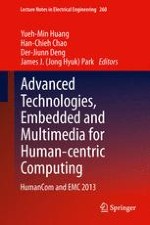2014 | OriginalPaper | Buchkapitel
Using Inertia Measurement Unit to Develop Assessment Instrument for Self-Measurement of the Mobility of Shoulder Joint and to Analyze Its Reliability and Validity
verfasst von : Shih-Ching Yeh, Si-Huei Lee, Yi-Hang Gong
Erschienen in: Advanced Technologies, Embedded and Multimedia for Human-centric Computing
Verlag: Springer Netherlands
Aktivieren Sie unsere intelligente Suche, um passende Fachinhalte oder Patente zu finden.
Wählen Sie Textabschnitte aus um mit Künstlicher Intelligenz passenden Patente zu finden. powered by
Markieren Sie Textabschnitte, um KI-gestützt weitere passende Inhalte zu finden. powered by
